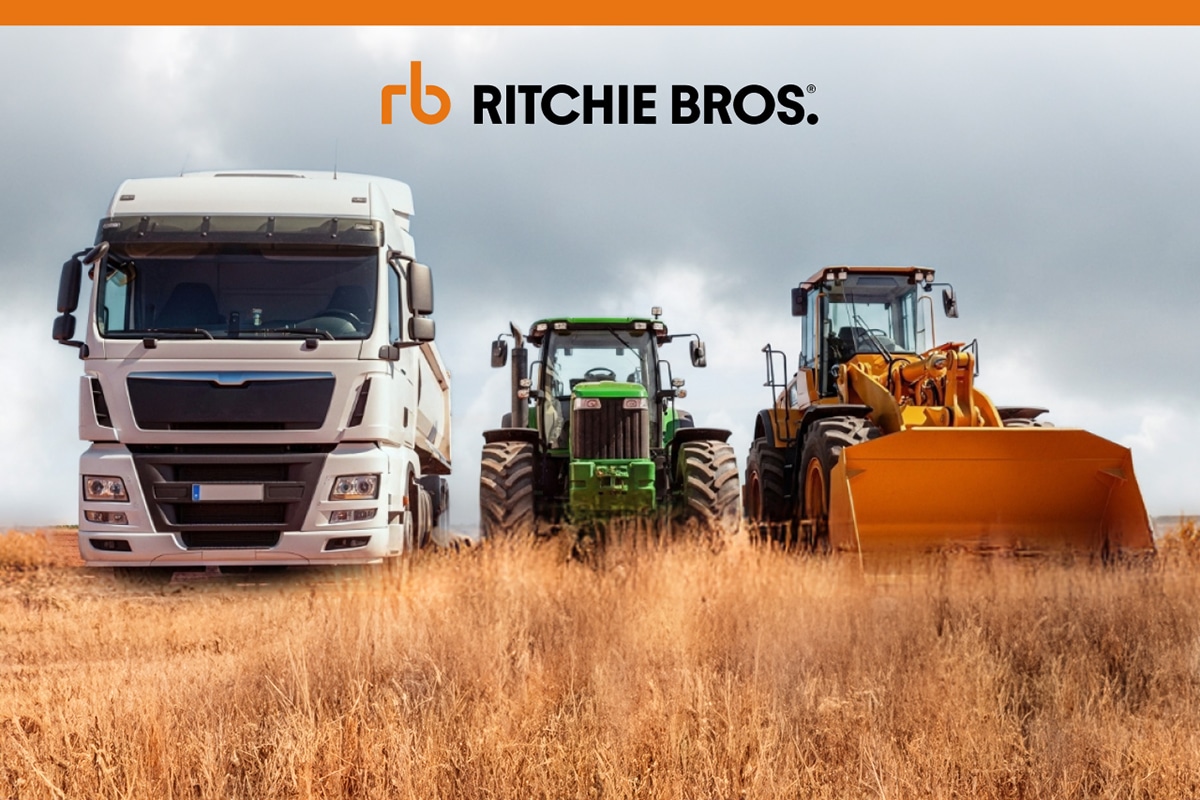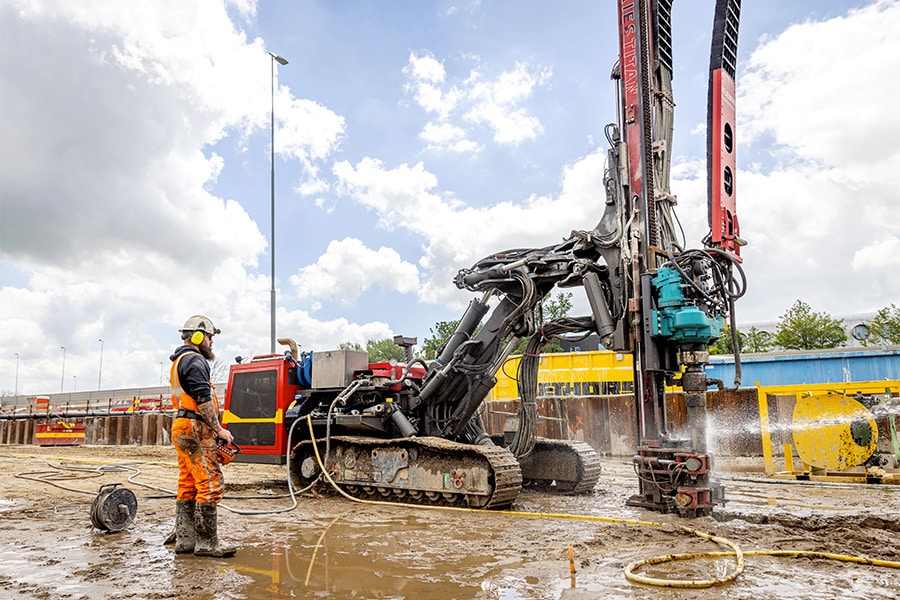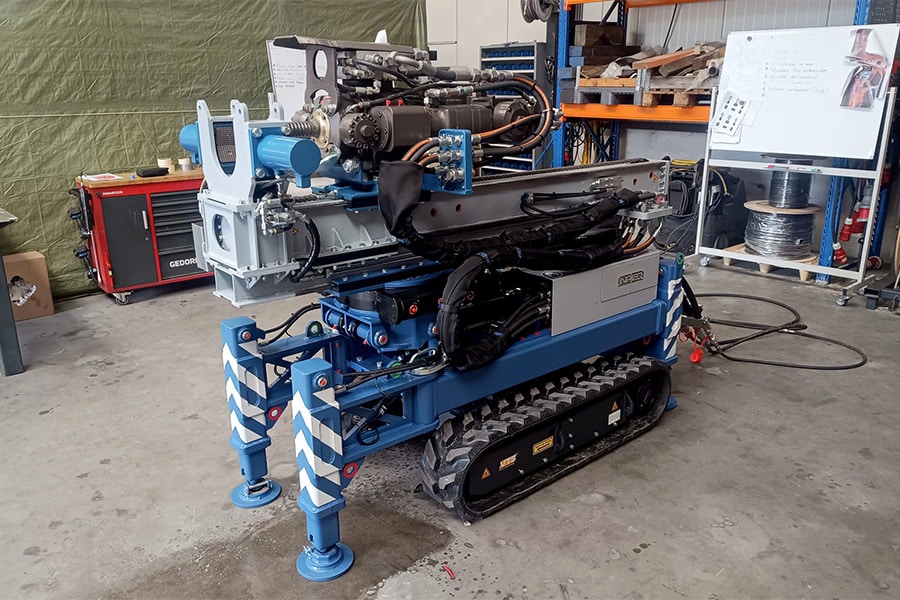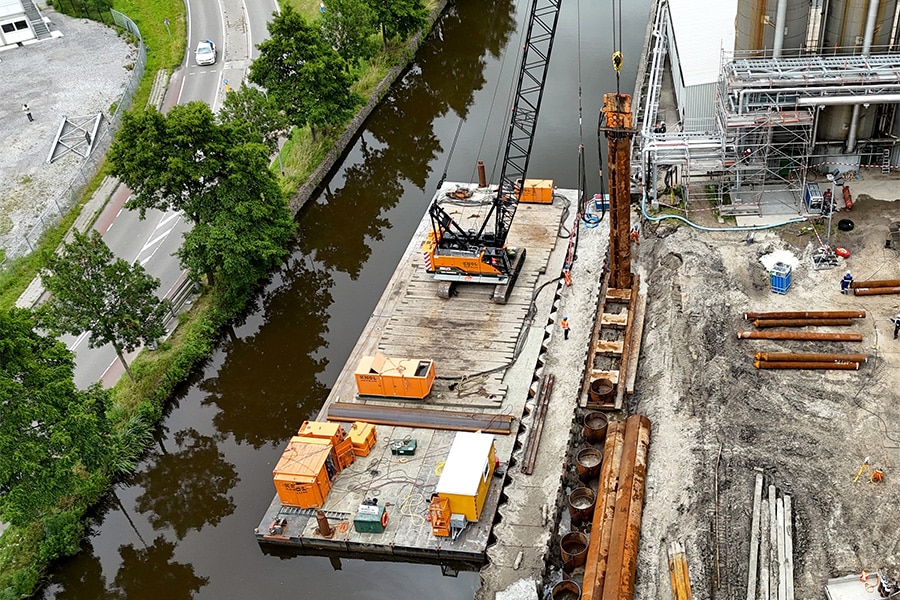
Welding at the highest level
To enable the widening of the A1 motorway between Apeldoorn and Twello, various existing structures are being widened. On behalf of the foundations Lommers Welding Services welds many thousands of rebar cuttings (reinforcement steel) on the sheet piling in accordance with the highest execution classes. A process that is often underestimated and requires a lot of expertise in view of the strict standards and changing circumstances.
Lommers Welding Services was asked by Heijmans back in the tender for advice on welding the many thousands of cuttings. "Over a year and a half later, we were awarded the work," says Michel van Dantzig of Lommers Welding Services. "Based on the drawings, we make the welding plan and provide the welding method descriptions. After approval by Heijmans, we get to work. For the extension of the structures we weld all the reinforcement steel in a diameter of 32 mm to the sheet pile walls on two sides, with additional welding to purlins and anchor joints. And all under the highest execution class 3 and 4 and the ROK 2.0."

Harmonized standard
For these types of projects where the highest standards are demanded, Lommers Welding Services often calls on welding coordinator Raymond Brand. "We notice that these strict standards apply to more and more projects," says Michel. "And that is more than logical. After all, this is about the foundation of a work of art over which a lot of cars are going to drive in the future. That just has to be right." Still, according to Raymond, the welding of rebar on sheet piling is still underestimated. "There is a lot more involved than what is often thought. This has to do with the fact that until recently there was no prevailing standard for rebar welding. The ROK 1.4 only referred to NPR 2053 'Welded joints with reinforcing steel and steel strips'. Nowadays the ROK 2.0 refers very clearly to the NEN-EN ISO 17660-1, a harmonized standard. Lommers Welding Services is one of the first companies that has anticipated this."
Unique position in the market
The NEN-EN ISO 17660-1 itself has been around for quite a long time, Raymond acknowledges. "That standard describes how to perform a welding method qualification and welder qualification, how to keep them valid, what the coverage area is, etc.," he says. "In practice, for a project like the A1, that means you have to check carefully beforehand what you need to do the work under standardization," Raymond explains. "Think of it also as quality assurance." From the NEN-EN 1090, Lommers Welding Services started early on to obtain welding method qualifications. "They have an extra scope extension on rebar in accordance with NEN-EN ISO 17660-1 for load-bearing structures and are audited separately on this. This is quite exceptional and gives them a unique position in the market."
Challenging welding conditions
In the summer of 2023, Lommers Welding Services began welding on site. "Surely the biggest challenge is the weather," says Michel. "We use the MIG/MAG welding technique and then conditioned conditions or protection from rain and wind are surely a requirement. This meant that during the winter months we carried out most of our work under tents or covers." So the welding conditions were quite challenging. Raymond adds: "On top of that, the sheet piles were generally rusty, dirty and damp. All things you don't want when welding. That makes the challenge even greater, but the welders of Lommers Welding Services can handle that too." Lommers is scheduled to lay the last weld at the end of March 2024. The welding is also periodically mirrored against the standards for a guaranteed high-quality end result.



